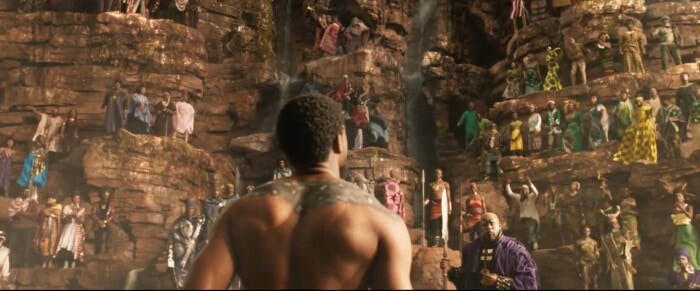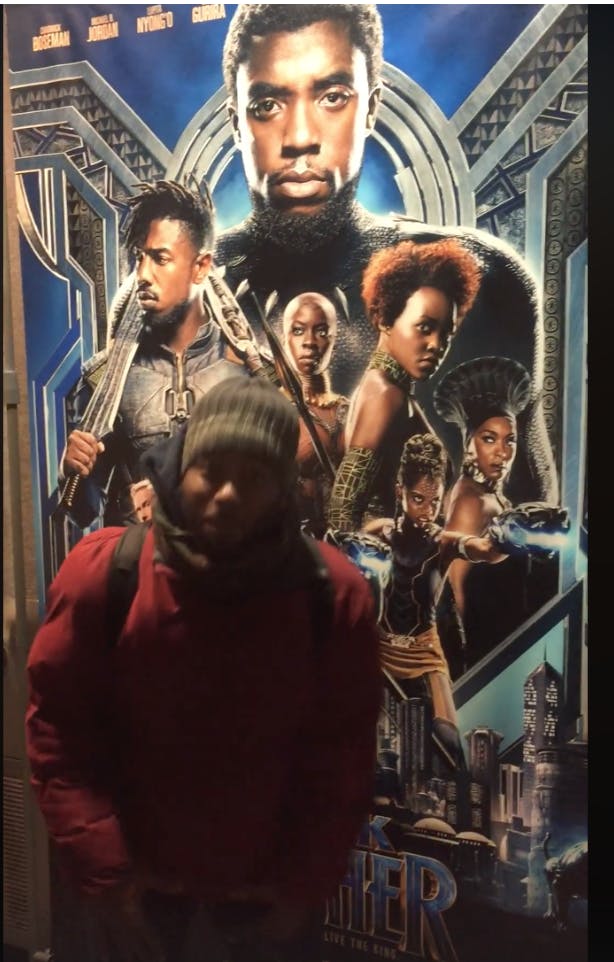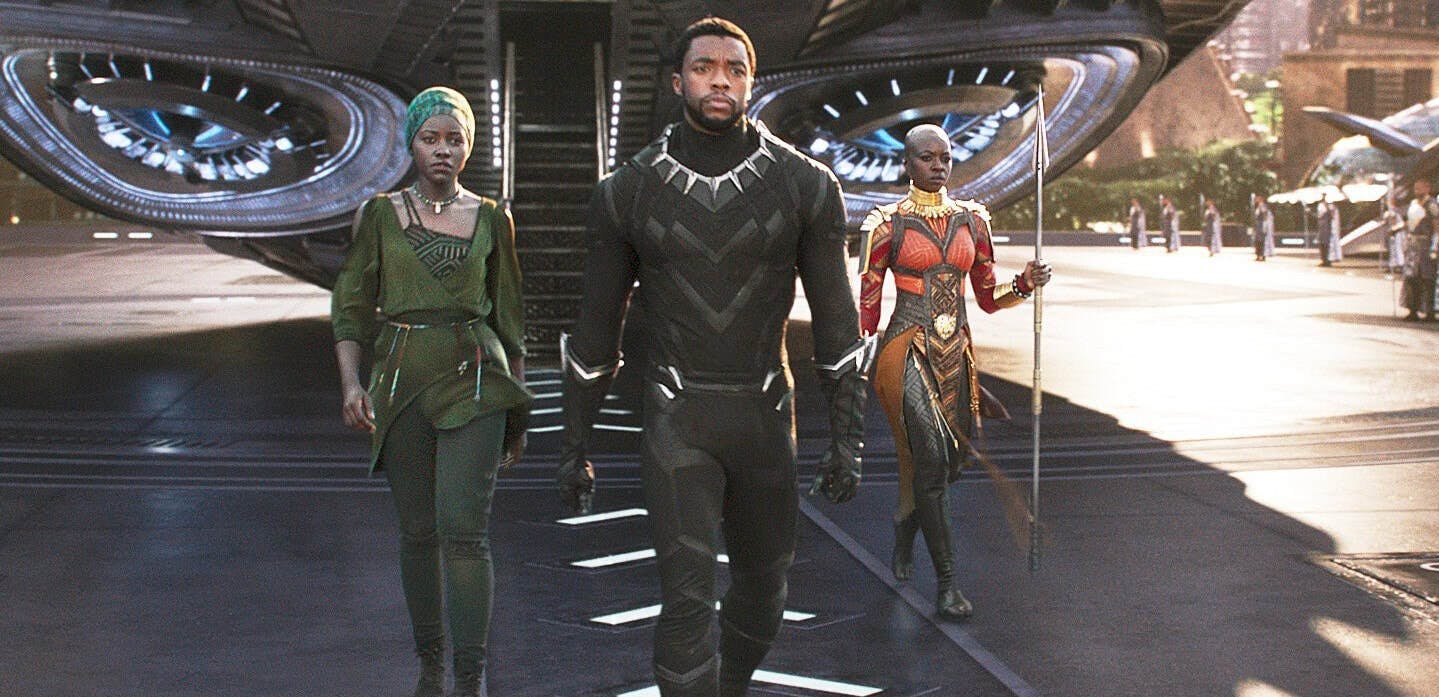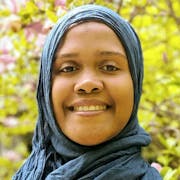Watching "Black Panther" With My Black, Muslim, American Daughters
By Autumn Allen

Most people considering bringing their children to see the ground-breaking movie Black Panther are concerned about exposing them to violence and profanity. Once I confirmed that, as my younger daughter argued, the level of violence and (mild) profanity was about “the same as Star Wars,” my primary concern with bringing my 8, 11, and 13-year-old daughters to see the movie shifted to where it often does as the parent of Black American Muslim girls. I wanted to know, which parts of their identities would be affirmed in Black Panther and which parts might be called into question?
While I loved Black Panther (I prescreened it without them — twice) and thought the positives of taking my children to the movie would probably outweigh the negatives, there were negatives I had to think about. I considered my children — their temperaments, what they’ve been exposed to, the discussions we regularly have as a family, and the complexity I’ve seen them able to hold. I decided to trust that, with some guidance, they could make enough sense of the complicated issues in the film. And they were able to — they loved the movie! In fact, we saw it again yesterday, their 2nd time and my 4th.
If you’re still deciding whether to take the kids in your life to Black Panther, or if you already have and want more fodder for your ongoing conversations about the movie, I’m sharing 3 reasons I took my kids to see Black Panther and 3 things that made me hesitate before taking my kids to see Black Panther.

"This is what white people get to feel like ALL THE TIME?"
3 Reasons I Took my Kids to See Black Panther
1. Representation - Black people exist, matter, are diverse and beautiful!
We’ve all seen the photos of black families, couples, and people posing with the movie poster, and dressing up to go to this film. We’ve seen videos about how people left the movie feeling different. The video above of Black movie goers adoring the movie poster is a classic as is the accompanying quote: “This is what White people get to feel like ALL THE TIME!” All of this Black joy around the film demonstrates how much representation matters. While I am not into superhero movies — or movies in general, for that matter — I was excited to go see Black Panther because, in a society where dark skin is devalued, it is sheer joy to see black people represented as beautiful, and not just one member of the cast. On this front, the movie does not disappoint.
The satisfaction of being immersed in Black beauty and cultures is part of the reason why many of us have seen this movie more than once or twice. All of my children left the movie feeling that they wanted to see it again. For those who live as a minority and feel marginalized, not feeling that way during the movie is a big part of the experience.

2. Representation — (Black) women can be strong and smart!
The movie is filled with indispensable women who are brilliant, like Shuri, the princess and tech expert; strong, like Okoye, the general; brave, like Nakia, the undercover operative. These women have their own lives, skills, and stories. They are confident and supportive of each other, of their causes, and of the men in their lives. This is a rare and rich representation of Black women, and, notably, of dark-skinned Black women.
Seeing these amazing female characters share the screen with King T’Challa and Eric Killmonger and hold their own is soul food for me and my daughters and for so many other Black girls and women. Their presence throws into relief and challenges what many children may have taken for granted: female characters are often represented as less complex, and certainly less capable and active, than male characters. Once again, representation matters.

3. Representation — Black people, like all people, hold diverse political views!
Through the various characters and their differing agendas, we see diverse political perspectives and their reasonings, limitations and potential dangers. These are important issues to think about, both as they relate to perspectives within the black diaspora, and among all races, cultures, nations and peoples. No character is perfect in every situation, so the film provides an opportunity to discuss the ways in which people try to effect change (or to protect tradition), what they give up in the process, and what elements mitigate success.

3 things that made me hesitate before taking my kids to see Black Panther
1. Representation of Muslim girls and women wearing hijab
There is a scene early in the movie where a Boko Haram type military group is transporting a group of women dressed in long hijabs, along with a boy who turns out to be a child soldier forced to join them. This is a powerful and important scene, as it establishes the type of work that Nakia is doing, helping people being harmed in other countries. For reasons eloquently stated by Somali Canadian scholar Hodan Ahmed Mohamed in her article refuting claims of the film’s islamophobia, it makes perfect sense for the scene to be included. Yet, as important as it is to the film and as an expression of solidarity with an oft-forgotten group of people whose black lives are not treated as if they matter, I was uncomfortable watching this scene as a Muslim woman who wears hijab.
As exhilarating as it was to see black women acting fierce and brave and brilliant, it was equally depressing to see hijab-clad women in positions of oppression, silent and inactive, being liberated by others. While this scene does depict a real situation, I was afraid that seeing this in a movie that is supposed to empower would be damaging for my daughters’ self-image. If they are already hesitant to wear hijab in public because of the stigma attached to it here in the US, this sole depiction of covered women, probably the first we’ve seen on a big screen, would not help. Whom would a girl rather look like, the heroine who fights the bad guys, or the helpless victims who look on in awe? Images are powerful. Once again, representation matters.
It is too bad that the media lacks positive, empowering representations of girls and women who choose to wear hijab. It would have been nice if the director had found a way to include one in this film to counterbalance the image of those who were being forced, but that was not the project of this movie. Since this film was by and, to some degree, for Black people, who have historically embraced the Muslims within their communities, the creators may not have thought it was necessary to go out of their way to show that that scene is not our impression of all Muslims. The fact that they were on Nakia’s list of priorities can be seen as an expression of pan-African solidarity.
To mitigate the negative impact of this scene, I shared the real-life story of the missing girls of Nigeria with my daughters. I also pointed out that Nakia fought the militants while wearing full hijab. She may not have been a Muslim character, but being a Muslim and wearing hijab would not have stopped her from fighting the bad guys. With young children, it is difficult to ensure that the visual impact of the scene is not absorbed as a representation of who can be strong versus who is weak. As my eldest daughter said, the fact that all the women removed the long hijabs when liberated implied that the popular narrative about hijab as the opposite of freedom is true (which is the experience of some women, but not all by far). Ultimately, the more we see diversity in film, the less burden each film will hold for being all things to all people and getting everything right.

2. “Might makes right” when determining a ruler
In the movie, no one questions the system of ritual combat and the right of the victor to be king. After seeing how everything comes to pass, however, the audience certainly can critique that aspect of Wakandan tradition. What makes a ruler fit? What are the strengths and weaknesses of sovereignty, and of different methods of choosing a ruler? What of the fact that the Queen does not take over? When Shuri, T’Challa’s sister, raises her hand as if to object to T’Challa being crowned king, she makes a joke about her corset instead.
After watching the film with my daughters, these questions have become part of our ongoing discussions as a family about what it means to lead, who gets to lead and how a leader looks and acts.

3. The couple African Americans in the movie don’t fare well compared to the Africans from the fictional country of Wakanda
As Christopher Lebron pointed out in his article arguing that Black Panther is “not the movie we deserve,” the two African American characters in the movie (Eric Killmonger and his girlfriend, whom he kills when she stands between him and his goals) leave much to be desired. For Black Americans like me, it can be painful to see the only two Black American characters so corrupted by their experiences that they must die. Even Killmonger’s father is killed after his concern for the struggles of Black Americans leads him to betray the isolationist stance of his home country, the fictitious African nation of Wakanda.
Living as a Black American in an impoverished, segregated neighborhood shaped Eric Killmonger’s rage which, as Ameer Hasan Loggins writes, resides, checked and tempered for survival, in most African Americans. Becoming part of the US army machine gave Killmonger the skills to carry out the bloodshed that his plan for revenge required. He is, in Loggins’ words, “a super victim of systemic oppression” rather than the “super villain” of a traditional superhero movie. Killmonger and his father wanted to unite the oppressed to fight the oppressors, and because of this, both of them must die. Killmonger crossed a line into a twisted and immoral strategy, killing anyone who disagreed or got in his way. But what does it mean that his revolutionary ideals were paired with villainy and had to be extinguished for the good of the world?
I agree with Adam Serwer’s well-written article distinguishing the film’s condemnation of imperialism from the impression some viewers got that Killmonger’s revolutionary ideals are being condemned. Killmonger’s character is profound, complex, and tragic, and viewers are intended to empathize with him in some ways. However, since he plays the role of the “villain” or anti-hero of the movie, will children be able to hold in their minds this empathy while critiquing his methods at the same time? Or might they take away the message that African nobles who don’t threaten the status quo are good, while rightfully angry African Americans who want the world to “start over” are bad?
Another article by Brooke Obie also references the rage born of black Americans’ experiences, saying that T’Challa needs Killmonger: “The uber-privileged are usually satisfied with their own excellence and benevolence as sufficient revolution. It takes the forgotten children to break the table of the status quo.” It is worth discussing these nuances with children who view this film.
For my eldest daughter, Killmonger’s back story was her least favorite part of the movie. We tried to get at what bothered her about it —she said “it didn’t fit,” and that “it was a distraction.” She would have preferred him as just an evil-for-no-reason bad guy, like Klaw. I wonder if it’s the fact that his villainy was born of a context that is very real and familiar for viewers. We aren’t free to simply hate the villain, root for the hero, and come away feeling like all is well with the world.
But what if young children do dutifully hate the “villain,” because they’ve been trained to hate the character in that role? My youngest daughter spontaneously said, “Did you notice how when T’Challa was crowned, the music was Wakandan, but when the other guy was walking into the throne room, there was that …other music?” I said that I had noticed that, and asked why she thought that was the case. She said, “Because he was from Oakland.” She said it with what might have been a twinge of disdain. Like it was being from Oakland that made him unworthy of a throne. Almost like when T’Challa called him an “outsider.” Did the movie leave her with the impression that black and brown skin is not a shame, but if you’re from inner-city America, you’re still probably a bad guy?
It’s complicated for adults, and more so for children, who may not be able to parse out these intricacies on their own. Our discussions will be ongoing.

See more of Christopher Aluka Berry's photographs of Black kids watching Black Panther at: http://bit.ly/2CDTrua
Final Considerations
Of course, you know your kids. I definitely recommend prescreening Black Panther to make sure it’s appropriate for them. Also, try to catch the movie in the theater. Seeing the representation of Black beauty and culture on the big screen heightens the considerable positives Black Panther delivers.
Have you discussed the movie with your family? How did seeing it impact your children?
Autumn Allen



